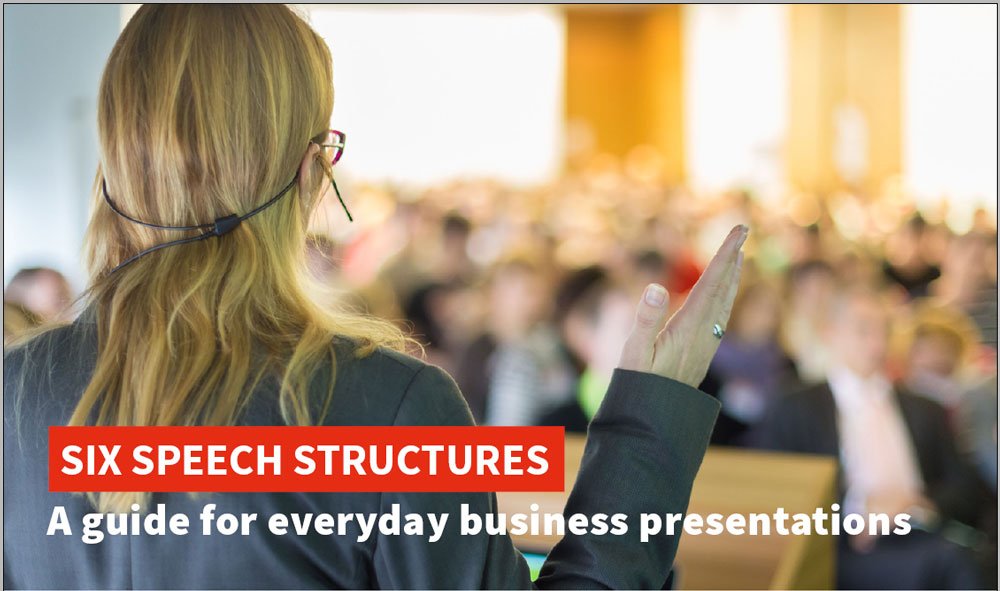The Most Successful Presentations Use This Framework


Stories are memorable, stories make a connection and so stories stick. All good. But if you don’t consider yourself a natural raconteur where do you start? Right here… Rob D Willis shares the framework for the perfect business pitch.
“What’s in it for me?”
That’s the question every single member of your audience is asking themselves while you speak. Our job, as speakers, is to answer that, so we can engage, inspire, persuade and inform.
Many speech builders and frameworks lay out the order in which to present information, but do little to highlight what should actually be presented.
I stumbled upon the answer to this in Donald Miller’s book, Building a StoryBrand: Clarify Your Message So Customers Will Listen. I was looking for something to help me as I setup my business as a public speaking coach, but was surprised to find a framework which would also help me create speeches.
The book uses the universal elements of storytelling to help brands connect with their customers. Connection is central to public speaking, and it is formed by an understanding of what the audience wants.
The basic storytelling structure as Miller sees it is:
A character has a problem and meets a guide who gives them a plan and calls them to action that ends in success and avoids failure.
For a marketer, the character would be the customer and the guide the brand. For a public speaker, the character is your audience and the speaker the guide. This is an opinion echoed by Nancy Duarte in her book Resonate.
The great thing about the Storybrand framework is that it methodically takes you through the different steps of the storytelling structure. Using it will give you a powerful lens through which to view your relationship with your audience, and tremendous insight into building a powerful message.
Using the Storybrand Framework In Speechwriting
The Storybrand structure revolves around a worksheet. Go through the questions methodically and fill them in as you go along. I’ll provide a link to the official Storybrand builder at the end of this article.
Note: it’s vital that you limit the number of responses to each question. There should be one character, one problem, one guide and one call-to-action. Just imagine if you saw a movie which had 5 different storylines, three heroes and eighteen villains – it would be impossibly complex to follow. The same goes for presenting: convey only one coherent narrative.
A character
What do they want?
This is the audience. Who are you talking to and what are their objectives? It’s essentially answering the old question “what’s in it for me?”. The book also says that this answer should come from one of the three survival instincts: money, time or status.
…has a problem
Villain
Every good story needs a bad guy. Personify the problem that your presentation is solving and make it the bad guy of the speech.
External
What the problem actually is – e.g. climate change, inequality in the workplace.
Internal
How does this problem make your audience feel? Is it fear for the future? Sadness at the loss of something? Humans make decisions emotionally, so your speech has to appeal to their emotions.
Philosophical
Why is this bad? Take a stand and say why you think that the problem is a problem.
…and meets a guide
This is you!
Empathy
Show that you understand the internal problem and frustrations of the character (your audience). All humans want to feel understood so state explicitly that you know how they feel. This is a vital step in building a connection with your audience.
Authority
Demonstrate why you should be the one to show them the way. This might be your credentials or experience, or it might be the extensive research you’ve done on a particular topic. Note that your authority should only relate to how you can better serve the character as a guide. No one cares about how many degrees you have, or languages you can speak, unless it helps them solve their problem.
…who gives them a plan
Process
Whether we are speaking to inform or persuade, there are usually stepping stones towards a final goal. Make sure your audience knows what they are. This step may require some simplification as I wouldn’t recommend including more than 3-5 steps.
Agreement
When you ask someone to do something, or think in a new way, that carries a fear of loss with it. Miller described the plan phase as stepping stones across a fast river; people don’t want to fall in and be swept away! Show your audience that your path is safe.
…and call to action
Direct
I believe all speeches should have a call to action. CTAs are memorable, give the audience an instant win and therefore bolster the speaker’s authority. They also make people far more likely to then go on and take further steps.
Transitional
How should they think now? Connor Neill calls this an “indirect close”, and it is reminding the audience of the pain that the audience will continue to suffer if they do not follow your message.
…that ends in success
How will the world look in the future if the audience does everything you say? You have to show people why things will be better, or there is no motivation to carry out the call to action. This promising vision of the future is great for a motivating close.
…and avoids failure
State what the stakes are and what might happen if nothing is done. How will the problem manifest itself? Using this in an introduction can be a powerful motivator for the audience to listen to the rest of the speech.
Character Transformation
Remember the audience is the hero of your speech. It’s worth considering and outlining the personal transformation which they will go through – how are they how and how will they be having listened to your speech and taken your call-to-action?
What I like most about the Storybrand framework is how it refocuses the entire message of a speech to the needs of the character, our audience. There’s no room for egocentricity in public speaking, though that is a trap many fall into. As public speakers, we must remember our place as guides, not heroes. We bring our message to the world to serve others in their own lives.
The Storybrand framework is so enlightening to both marketers and speechwriters because both attempt to do the same thing: show people – be they customers or an audience – a different vision of the world and persuade them to pursue that – either through buying a product, changing their perspective or way of life.
So next time you sit down to write a speech, take a few minutes to fill out the Storybrand framework and see what insights you can come up with.
You can find the online Storybrand builder at www.mystorybrand.com.













